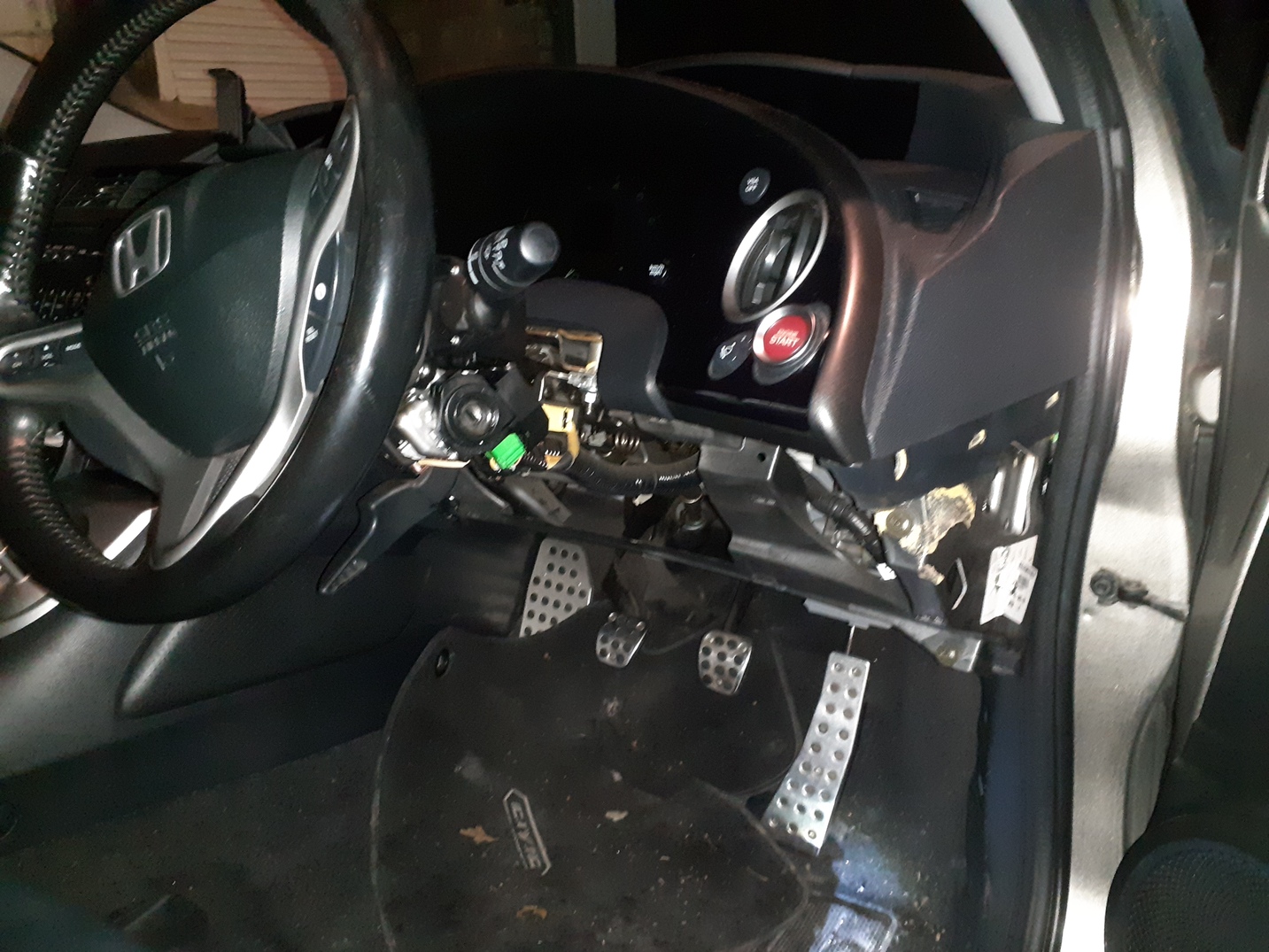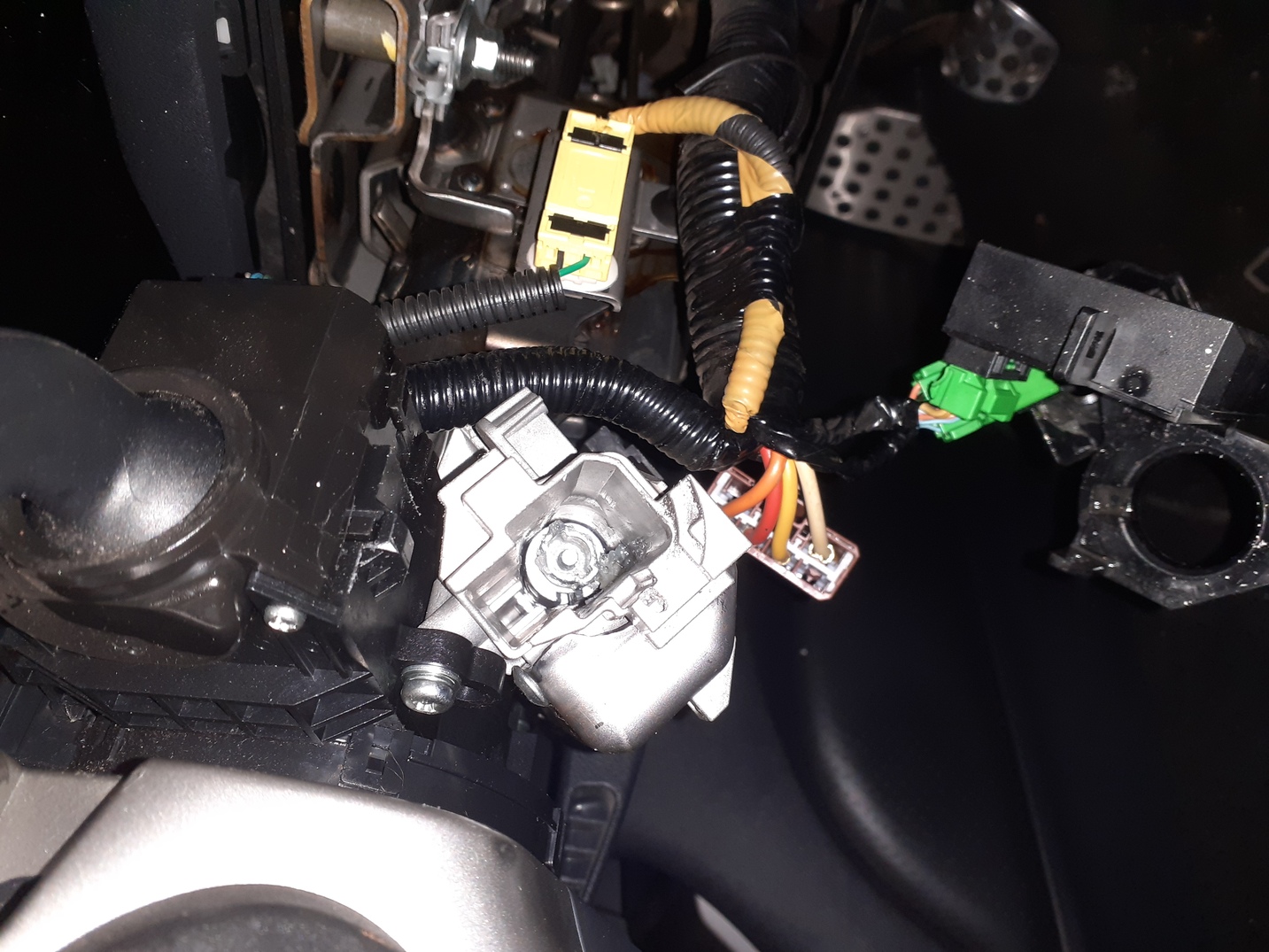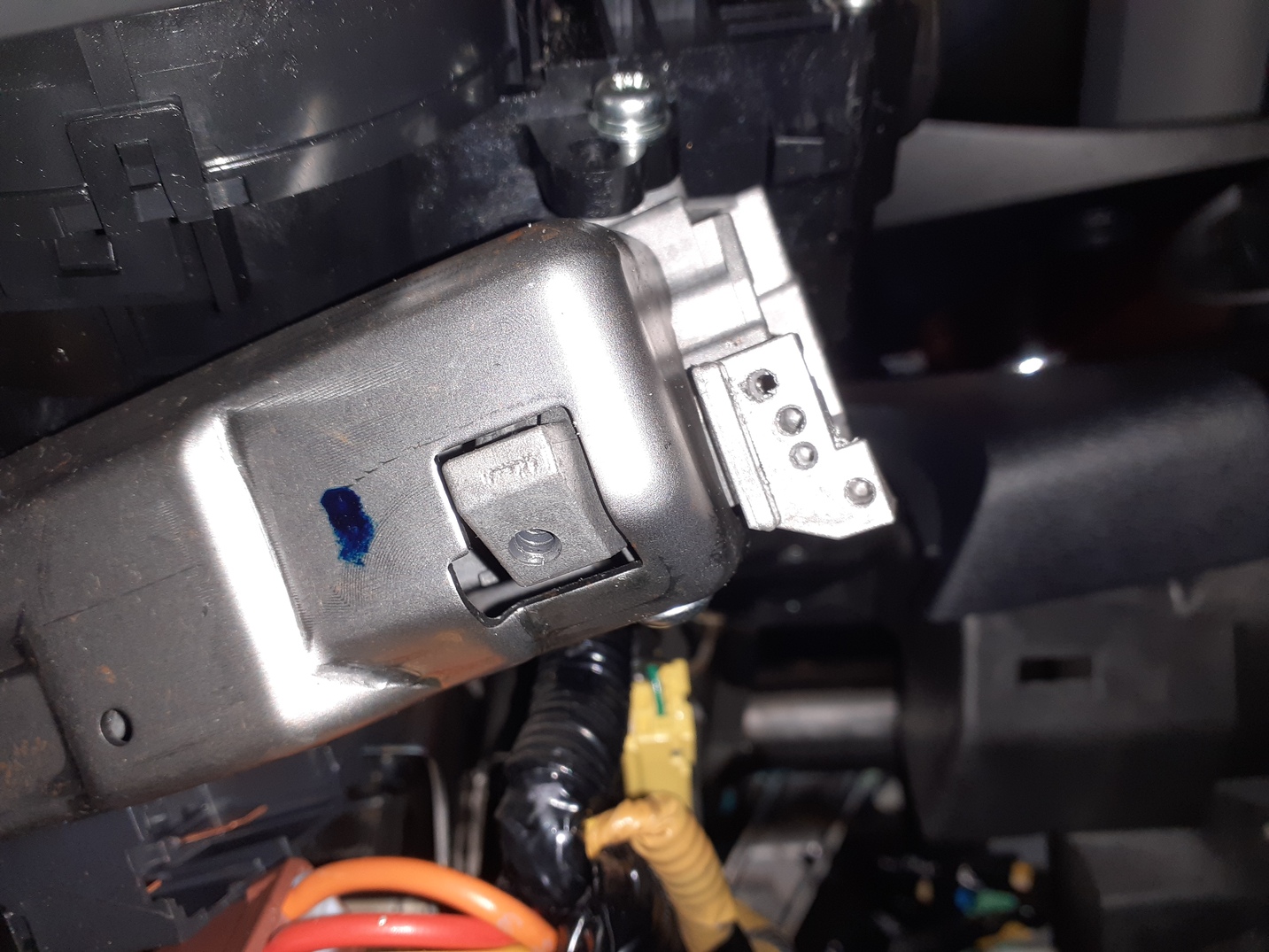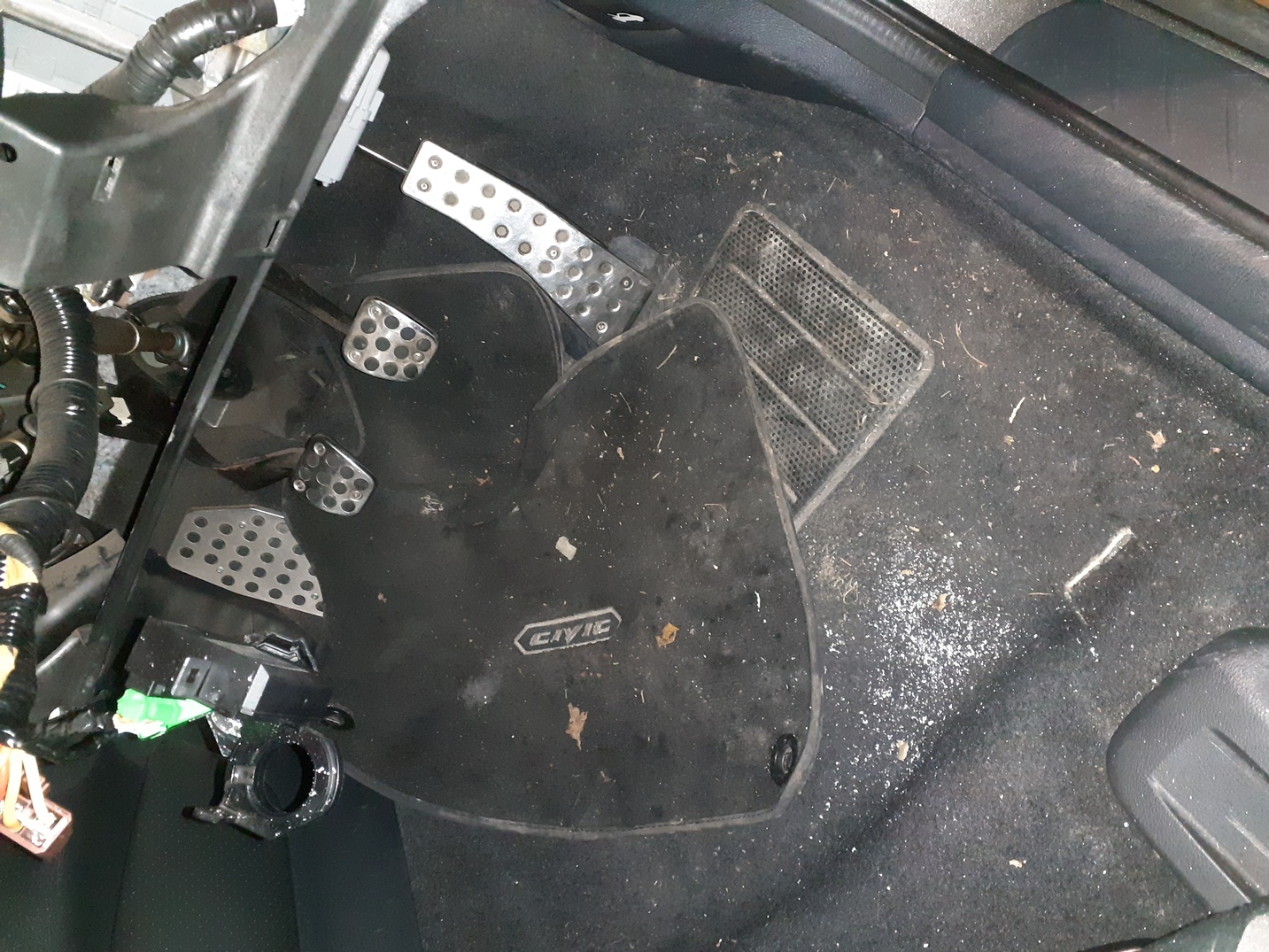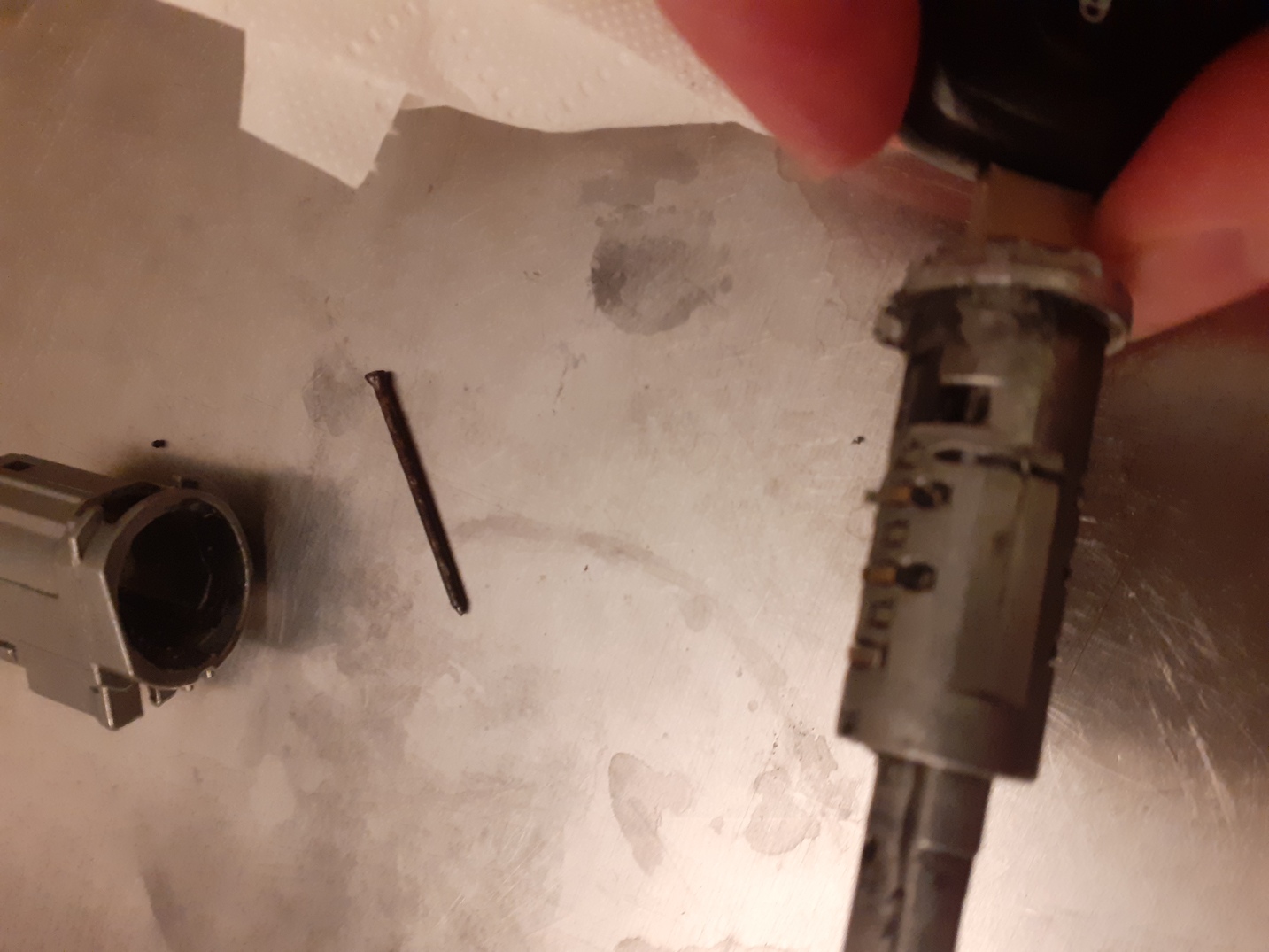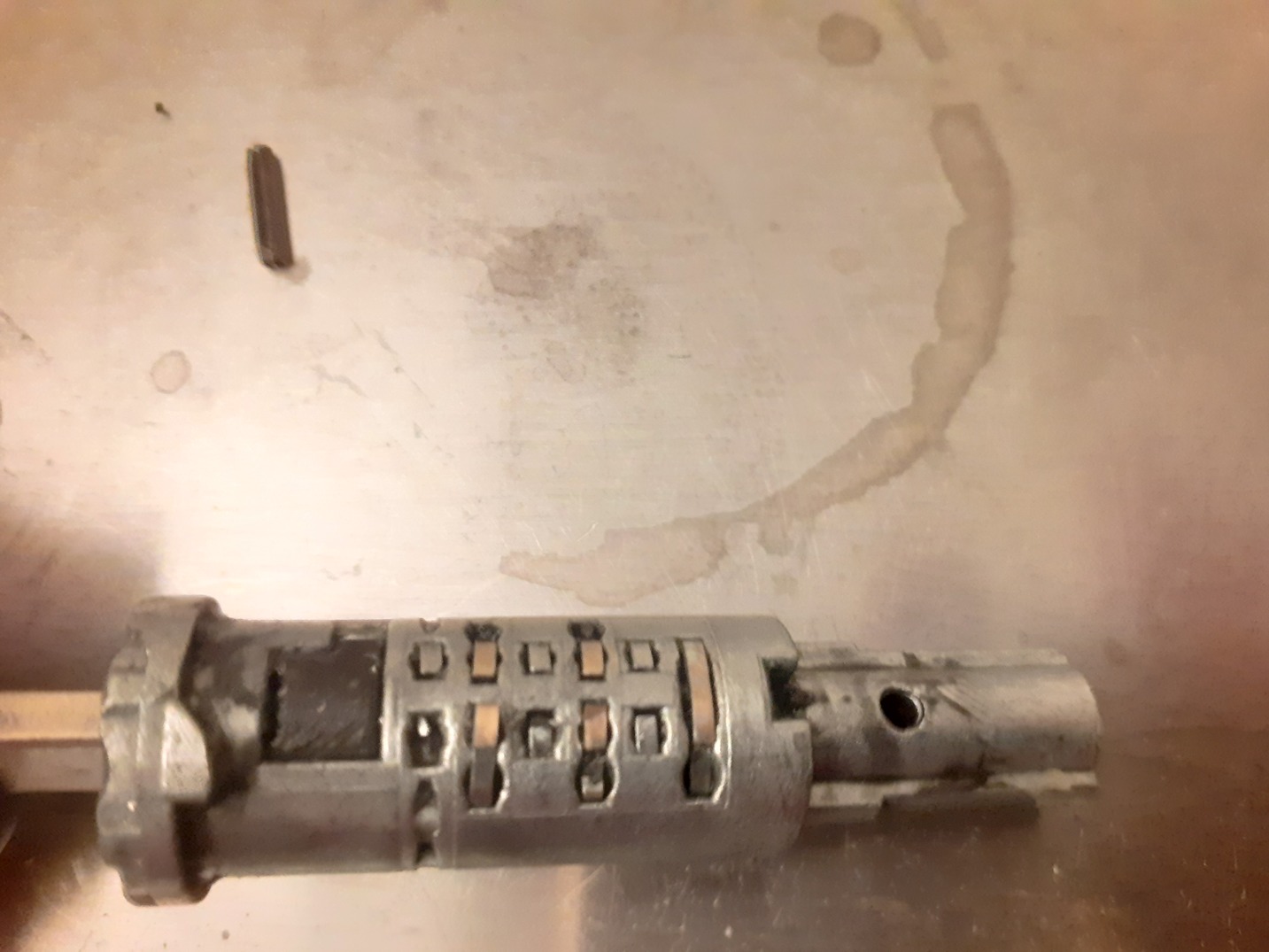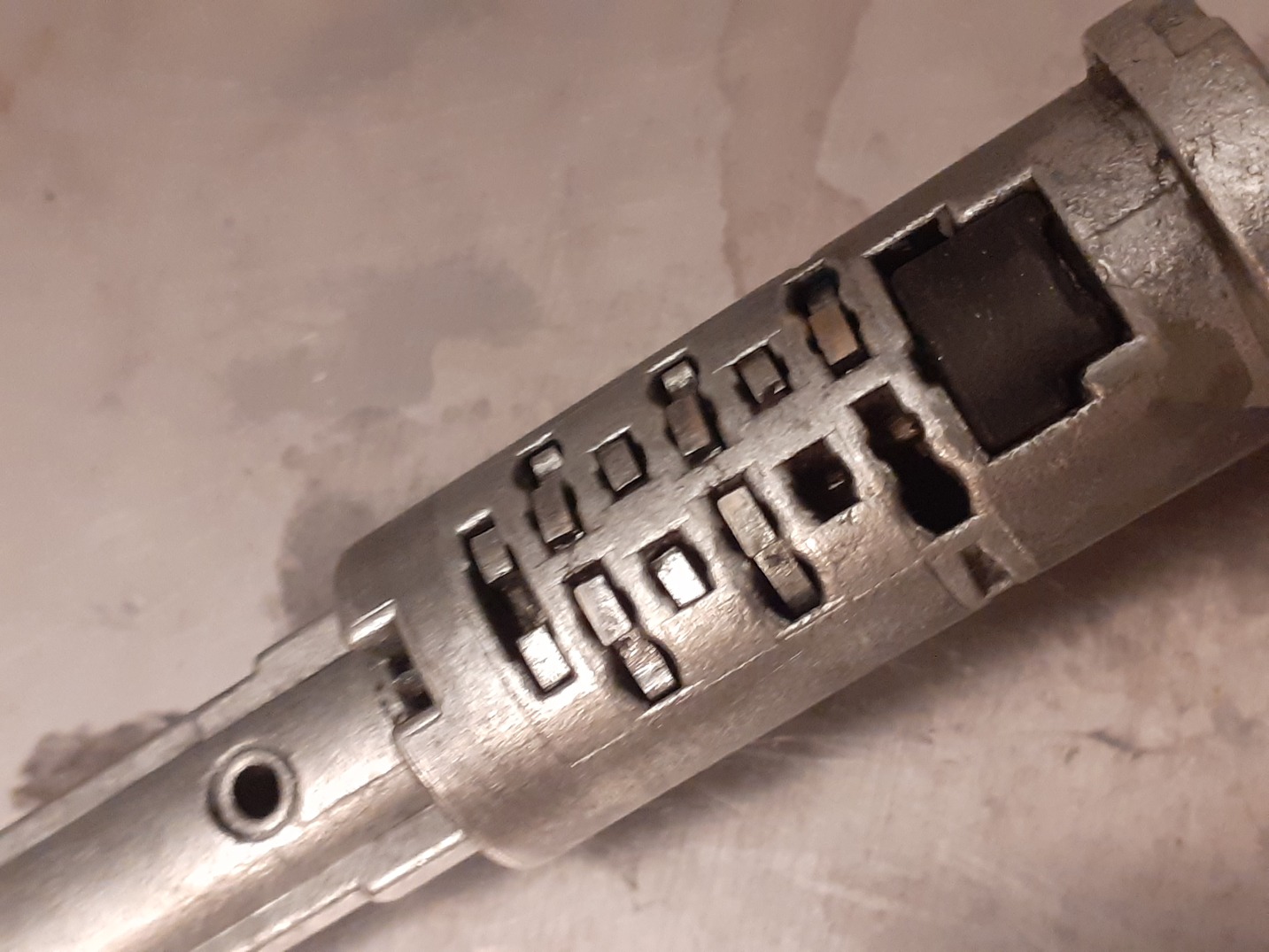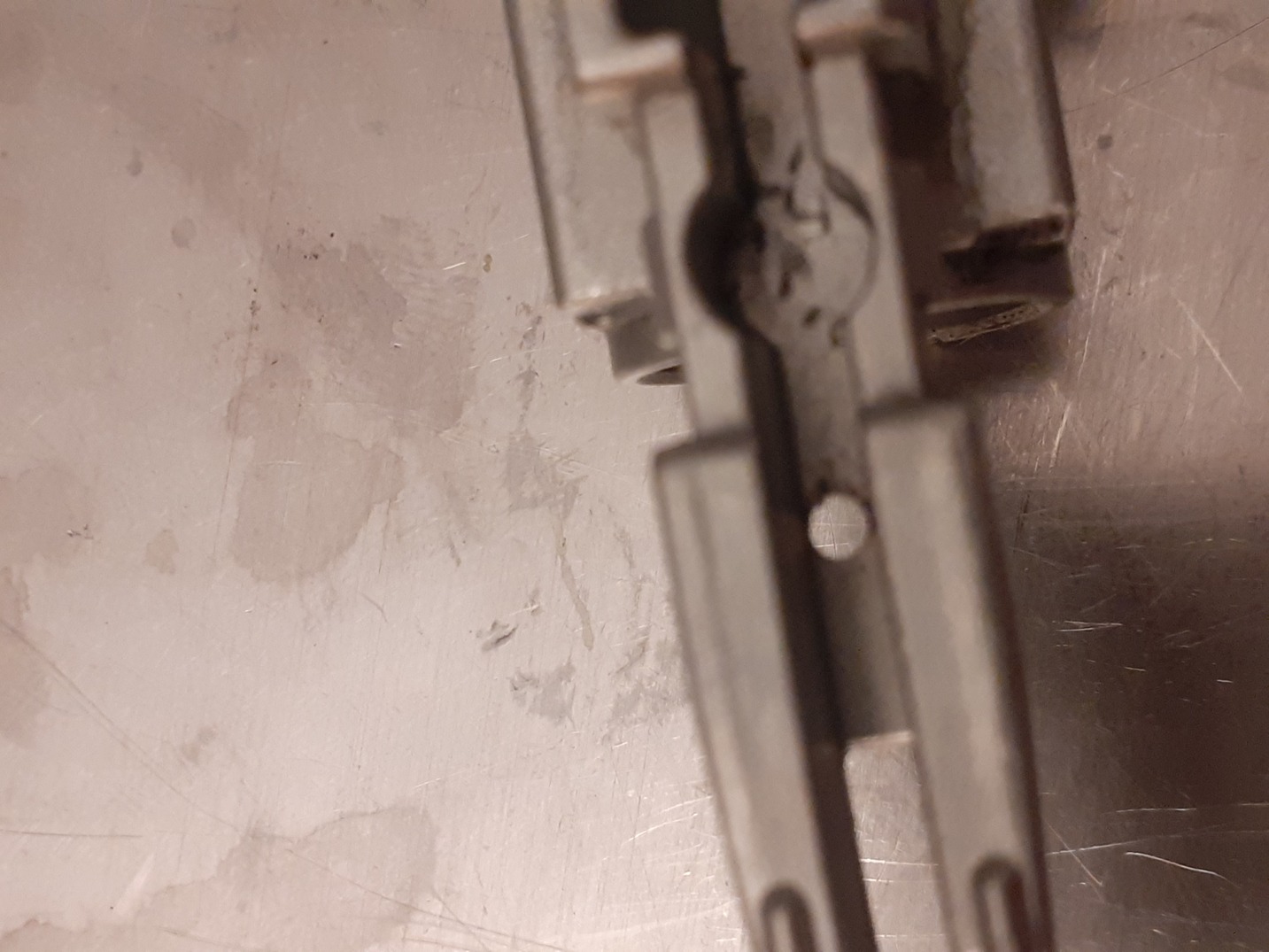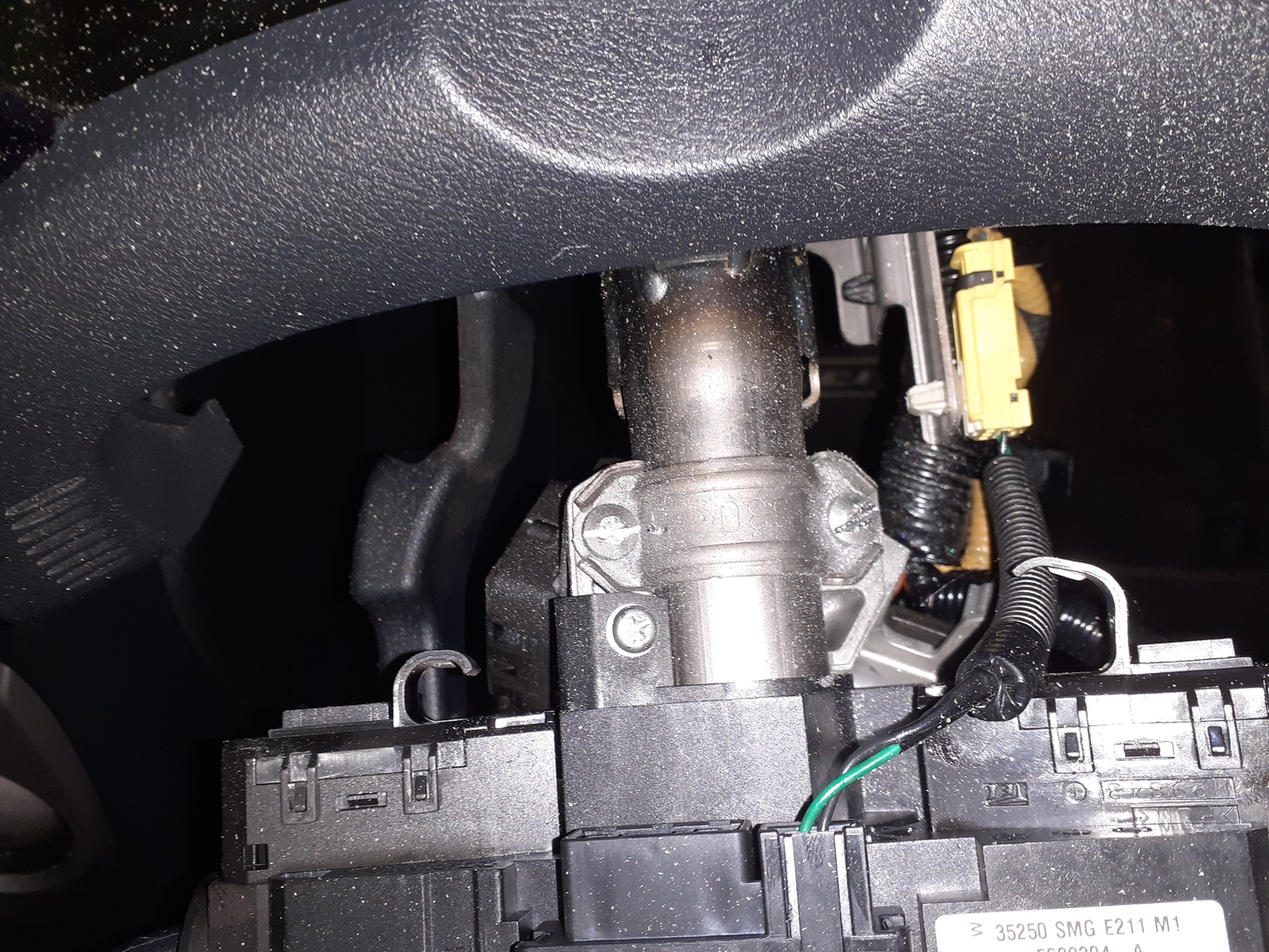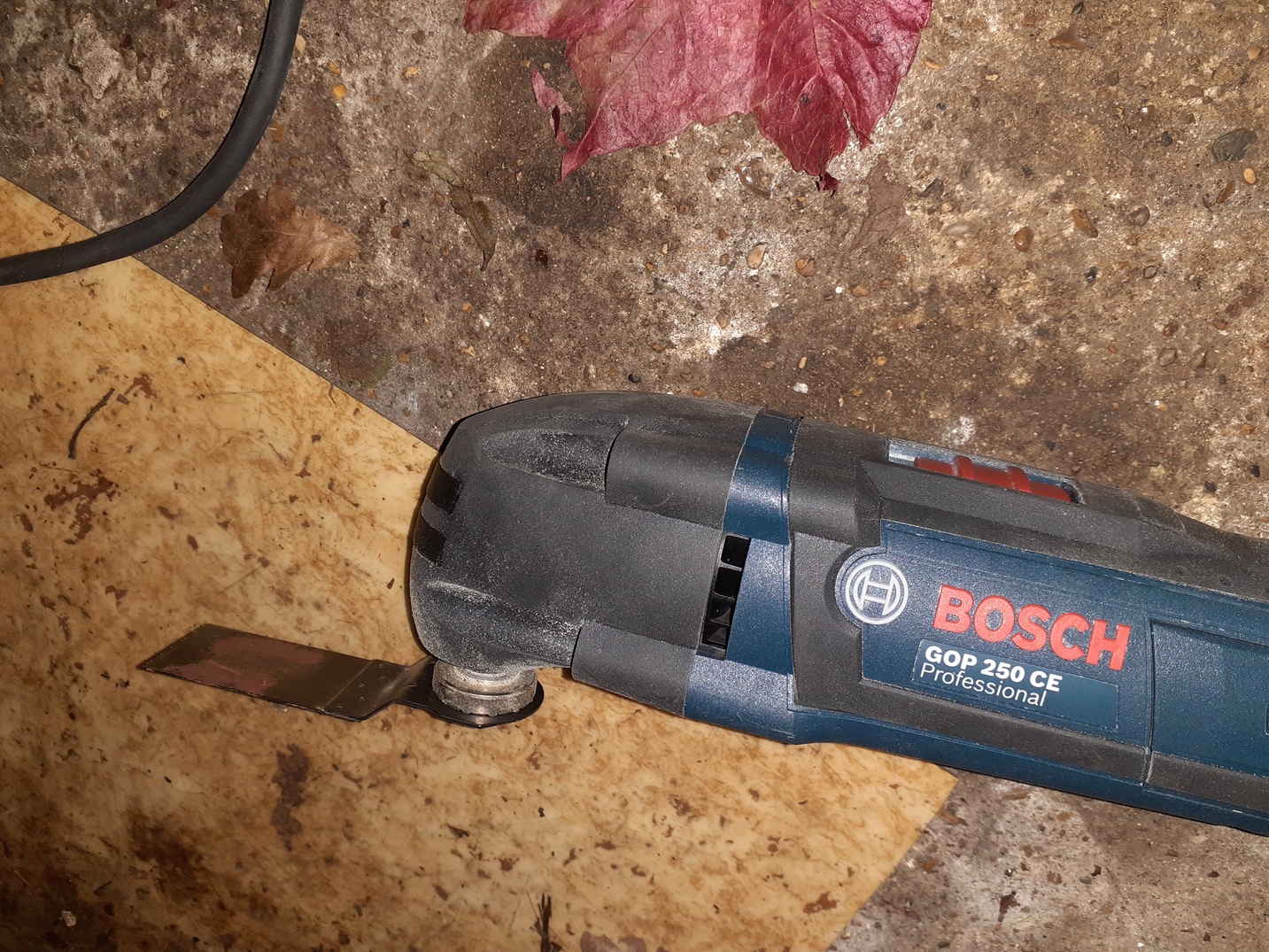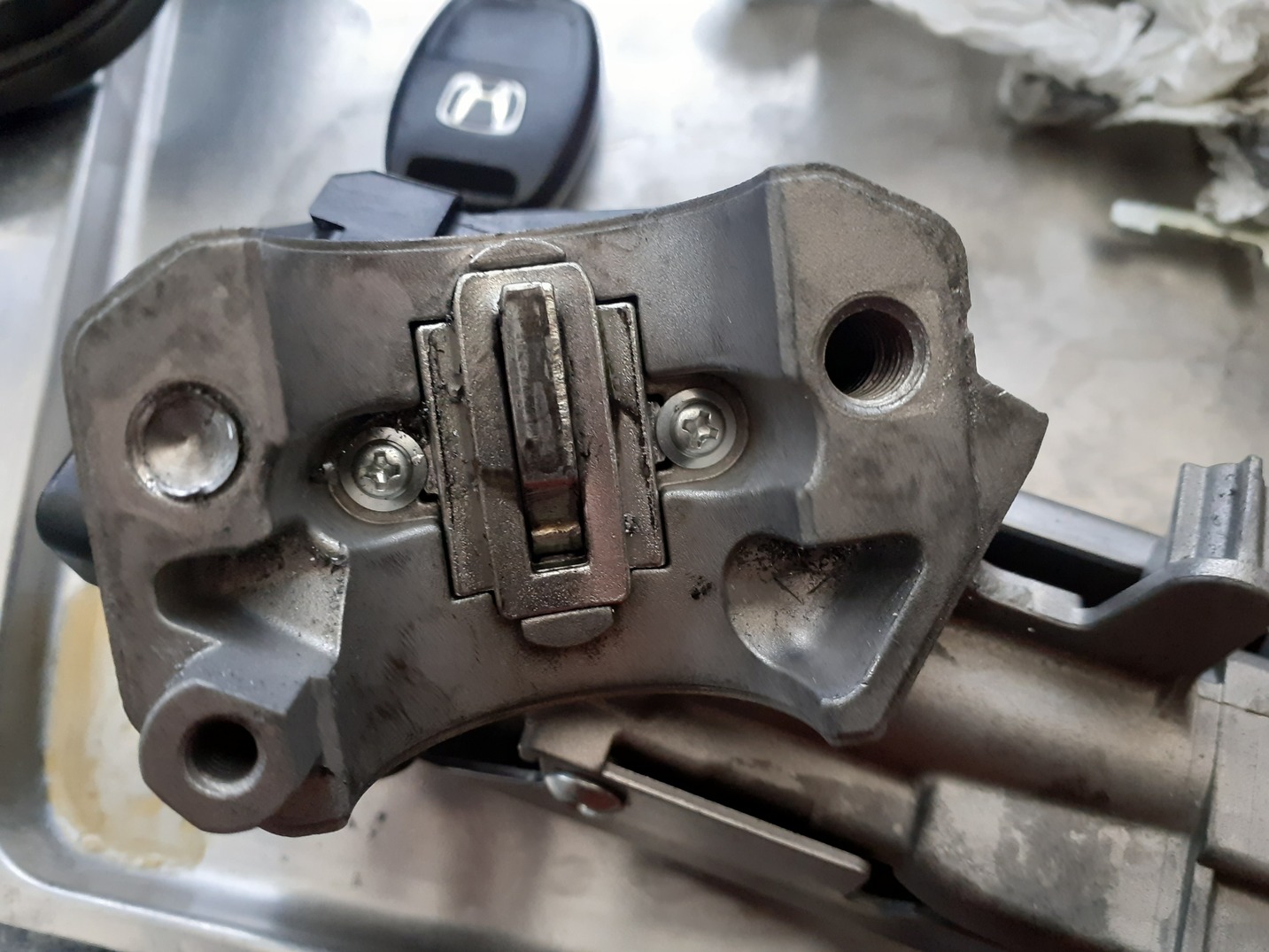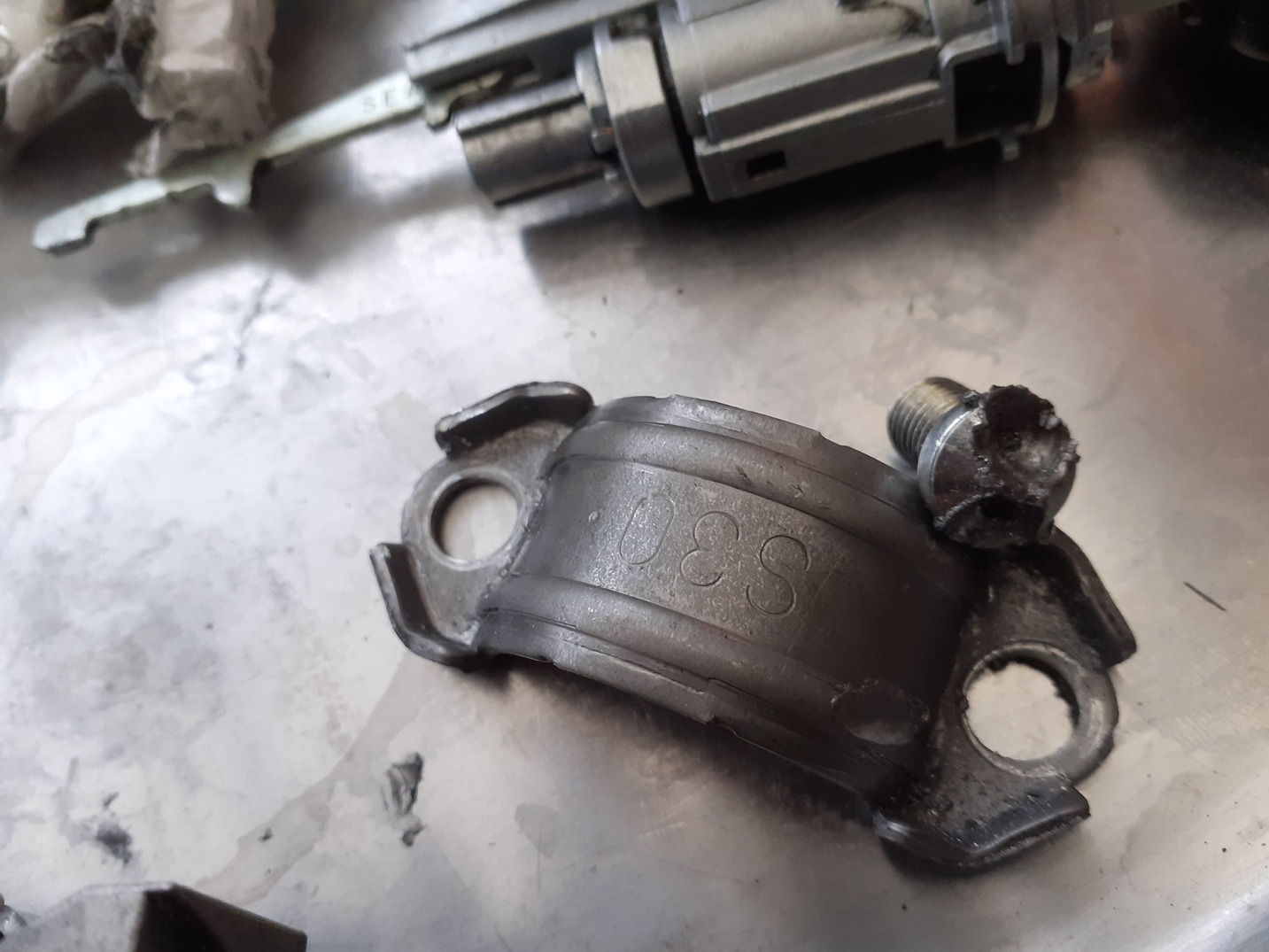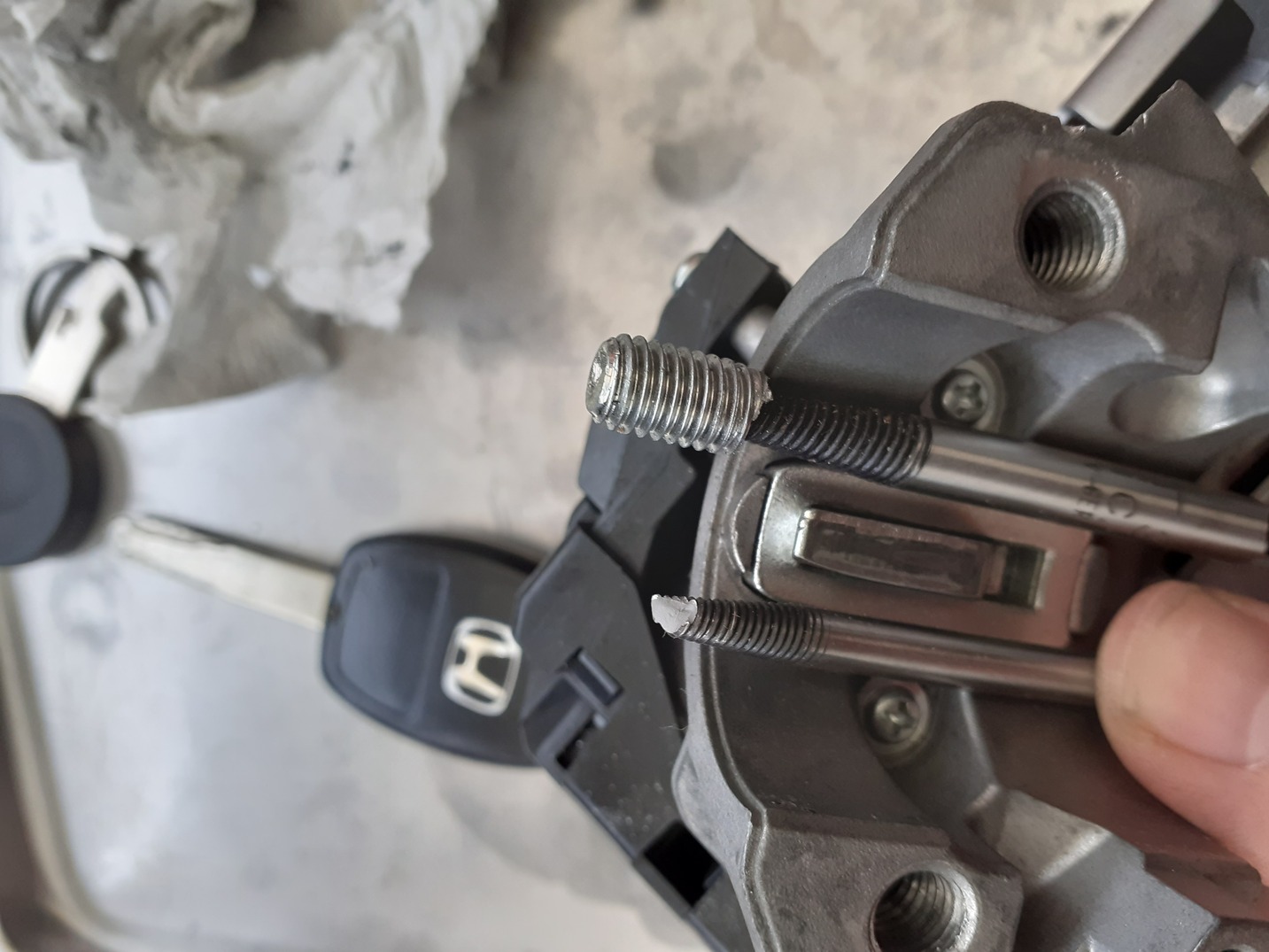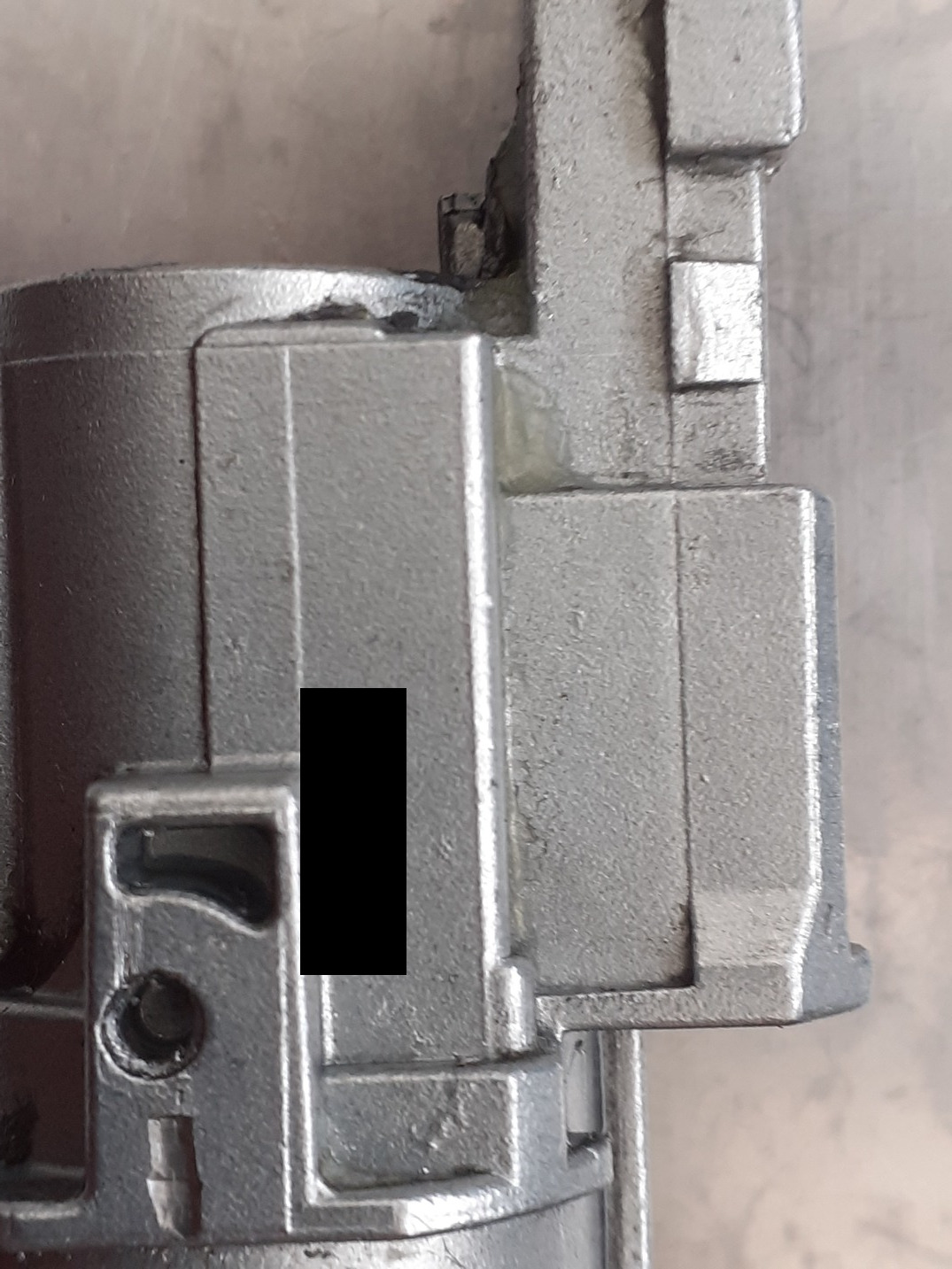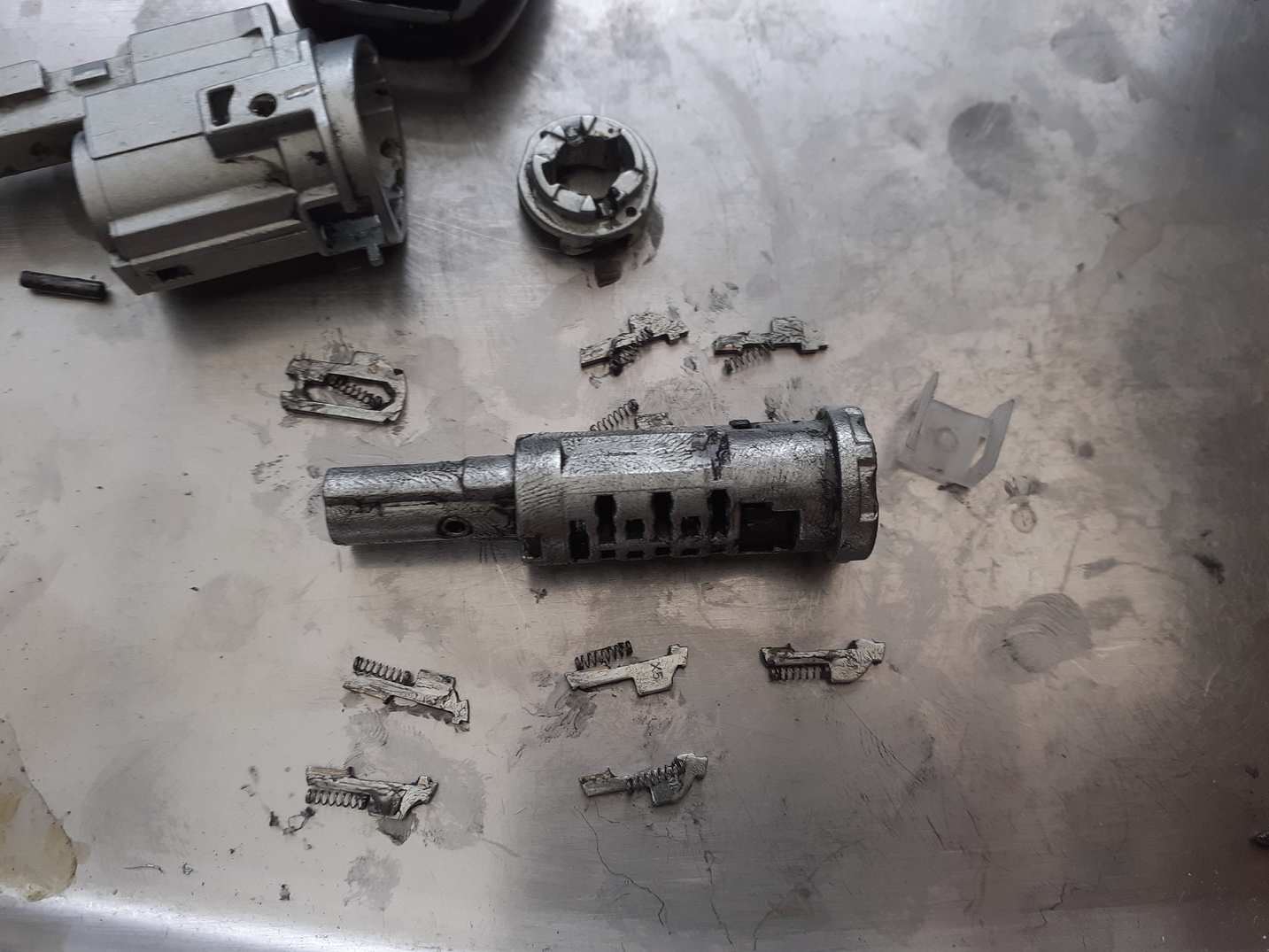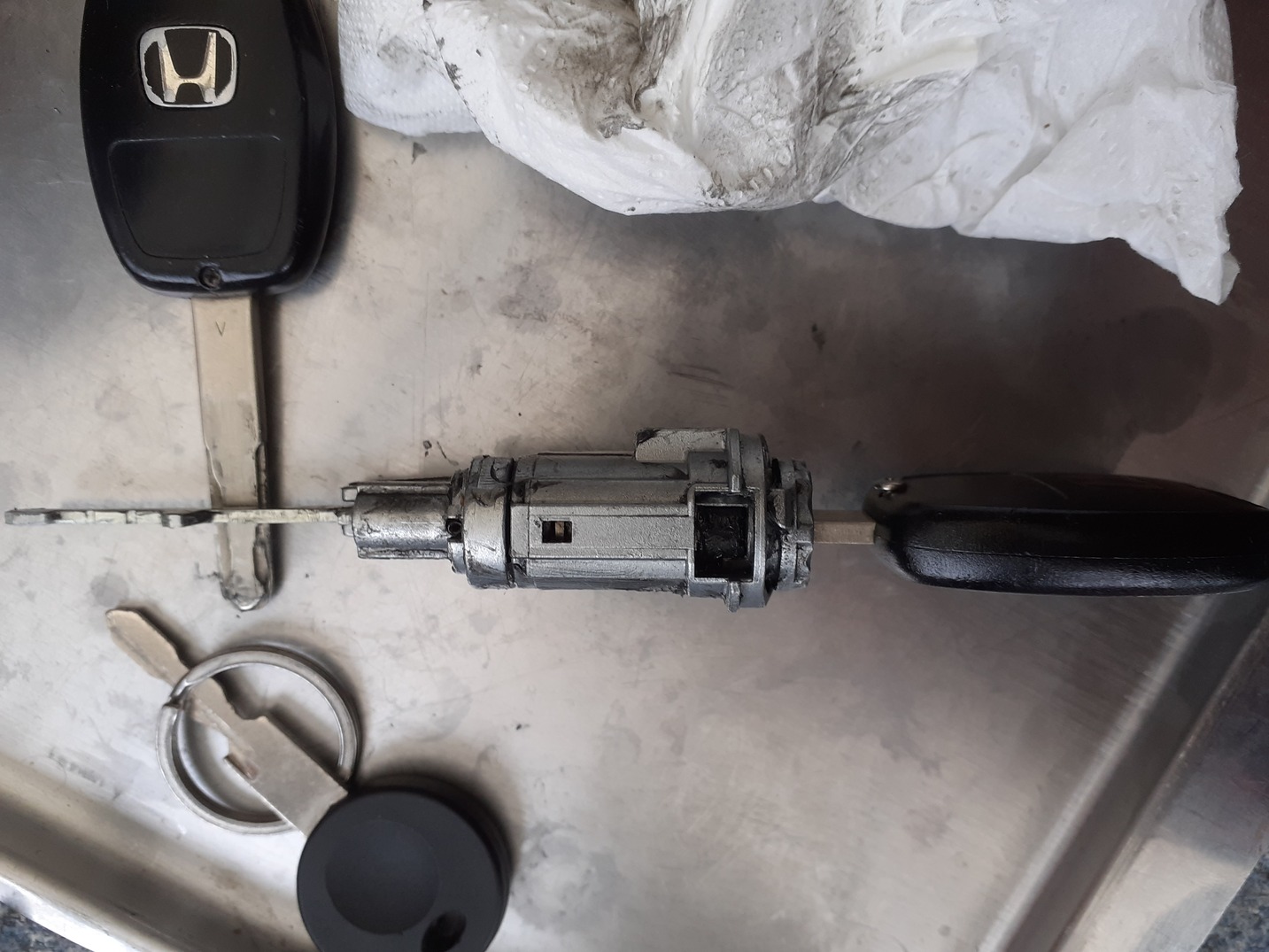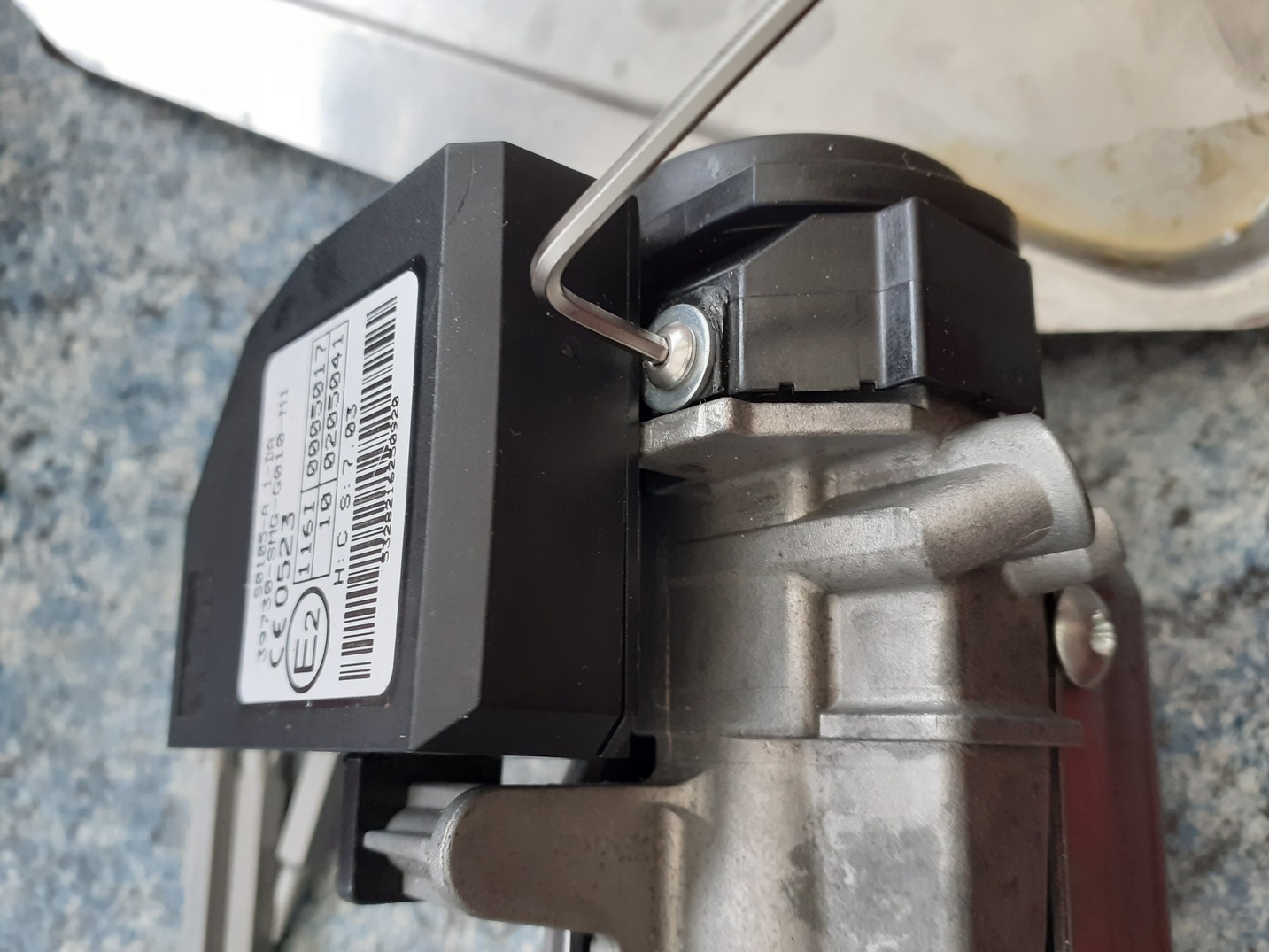Halfway down the country, at 7.30 in the morning (having been on the road since 5.30) the key stopped turning in the ignition. We have an old (‘06) Honda Civic, and the AA man blamed the age. He was able to force the key round, doing much the same thing I’d been doing, only more effectively, and we drove on, to repeat the same rigmarole the next time it was started. The AA had been free (it turned out the car had cover from being serviced at a Honda dealership), but a locksmith wasn’t going to be. Thus I ran to screwfix and bought a screwdriver and removed the plastics in a slightly wet carpark in Bedford: but I couldn’t get the last screw to get the antenna off the barrel, and anyhow it wasn’t coming without more tools. Thus after fighting for long enough it turned, and the car was driven down to London and put in the garage; and we went off on holiday.
When we got back the spare key (sent down from Durham in the interval by a friendly landlord) was no more effective at turning the lock, so it clearly had to come out. Here is the inside of a civic without some of the panelling:
The ignition barrel is under the plastic parts, partially hidden by the indicator assembly, which is screwed to the ignition + steering lock assembly, itself secured to the steering column with ‘anti-theft’ shear-head bolts. On which more later.
The first thing was to dismount the plastic, which involved filing a square head on one of the screws (the one directly between the key antenna and the indicator assembly) after which it could be worked out with a spanner and molegrips. Then a small hole is drilled in the casting, and a locking dowel pin (2mm split pin/roll pin) can be tapped out with a nail. I am an idiot and mistook the barrel/housing seam for the edge of the casting and driller the first hole too high up, drilling another just below it and weakening the casting needlessly. I have since found a much better way of getting this pin out:
The roll pin can be removed by pulling it with fine tweezers, without drilling any holes.
You need a very finely pointed pair, and you poke one jaw inside the hollow pin; the other grips the outside and it comes straight out. One way or another, this is what it all looks like:
I made a mistake withdrawing this lock which lead to another day’s work:
When pulling the lock assembly out, leave the key out so the steering lock bar is as high as possible, and try to lift the bar over the assembly: if you pull the assembly inside the whole thing will have to come off.
That said I couldn’t get it out without the key.
This yielded the lock:
and the bad pin was immediately visible:
I simply removed this pin, which resulted in a barrel which (with the less worn spare key) behaved itself:
With this done the whole thing goes together and turns properly:
At this point I waited until Dad came home to show him the lock, only to put it in the car and find that it didn’t turn. Further research on youtube suggested that the steering lock had moved inside, and the only way to fix it was to take the whole assembly off. So I ground slots in the heads of the anti-theft bolts mounting the lock to the column:
This got us nowhere. After fighting with a screwdriver; trying to tap the bolts round with a punch; borrowing Grandad’s impact driver and hammering away at them; drilling a hole and trying a stud extractor (which I broke off in situ) I gave up. The left hand bolt could be drilled out; the right hand bolt, with the broken stud extractor trapped in it, was drilled all round the extractor in an attempt to loosen it, and then I tried tapping it—and it turned! So that one unscrewed:
Whilst you are at it, take a picture of the key code so you can get another pristine key cut. Mine is behind this black rectangle:
Then, since I had it apart again, I took the whole thing apart, packed it with grease, and then put it all back together again:
And then put the whole assembly back together again, replacing the filed screw with a little allen head machine screw, which can be undone easier in the minimal clearance it has when mounted, in case I need to get it off again:
When you slide the lock assembly in, press the steering lock below the surface of the housing, and it will click and let the whole thing go together. Then when you turn the key the steering lock will retract and you are home and dry.
For some reason there are no pictures of the final assembly, it’s as simple as screwing the indicators back on, bolting the bracket back down again (I avoided theft-free bolts—I don’t have any anyhow—but had to put spring washers under the bolts I used to prevent them jamming against the bracket), plugging everything back in, getting the plastic back on and then clearing up the enormous amount of mess I had made all over the car. And after all that it starts again.
None of the other pins look in as poor shape as the pin I took out (which was allowing the key to ride over it without moving at all). But sooner or later another will likely get there. One can get new pins from Honda (or some garages); or a new lock assembly from Ebay; or one could take all the pins out (or all but one) and count on a thief not noticing. It didn’t go all at once this time—it started acting up the day before, and I stupidly ignored it—so hopefully at the first sign of difficulty I can strip the whole thing down and have a look at it, before getting stranded.
Oh, and WD40 in any mechanism is only a temporary fix: WD40 means you have to strip the whole thing down and regrease. There was barely any grease left with all the WD40 I’d sprayed in trying to get it working again. WD40, by the way, is a rocket waterproofer and only a fairly rubbish oil. It leaves a residue. A proper oil—or a spray grease—is much better and much cheaper, albeit it doesn’t smell as good
